How to Photograph Jewelry the Inexpensive Easy Way
There are many tutorials to photograph jewelry.
We are going to cover a method designed by a professional but instead of using high end big budget photography equipment, we are going to use basic household materials.
The technical principles used in this tutorial are the same as when having access to fancy lights, tables, a studio and photo equipment. This tutorial is not about photography hype. It's about teaching techniques and principles that can help you discover good core photo calculations that get correct results.
Yet, this is the very inexpensive easy way to photograph jewelry YOURSELF. Yes, even YOU can do it!
It will teach you basic principles of photography lighting that when applied correctly, you can obtain results that are astounding! This will also help you discover and to learn on your own. To find ways and use a set up that works for your own personal jewelry shooting style.
All your going to need is:
Some white tape, a bunch of sheets of bright white copy paper,
two simple clamp lights from a hardware store,
two 100-150W equivalent CFL fluorescent bulbs,
a 4"x4"x11" block of wood,
and maybe a few wood scraps or anything to clamp your lights onto. That's it.
Just a quick note. Photographing jewelry can be a bit difficult. Just keep in mind is it DOES require some patience and practice!
People say, jewelry is, in general, hard to take photos of. You may have tried before, but maybe you never got the all the key information to make it happen. Don't give up. This overview won't make you a photo star overnight. But it gives you core principles and guidelines that will put you on FAST track.
Photographing your jewelry CAN be obtainable.
Remind yourself that MANY people do take their jewelry photos with great success.
Each time you do it, LEARN, CONCENTRATE, and GET BETTER! You can do it!
Still with me? O.K, so let's start:
1. Start with a nice clean workspace
Your going to need a work area to work in. At least temporarily.
Most jewelry is generally small so a general area of 24"w by 26"d by 15"h.
Obviously if you need to shoot bigger jewelry you need more space or smaller etc.
Your going to need two lights. Keep them the same. Don't mix them.
Get them at Home Depot or any hardware store. They are simply just the basic clamp reflector workshop light. Nothing fancy. $12.
If you can find flexible head desk lamps at a garage sale for $15 those work good also for a bonus.
The bulbs you'll need are standard CFL florescent bulbs you buy at the hardware store 100-150W.
Buy the brightest ones there are but they MUST be bright white and don't need to be huge!
Not yellow. You need bright white.
NOTE: DO NOT EVER USE ANY LIGHTS THAT HEAT UP OR GET WARM! EVER!
CFL lights are fluorescent and generally low wattage and stay cool. Not like others.
NEVER WALK AWAY WITH THE LIGHTS TURNED ON. TURN THEM OFF IMMEDIATELY AFTER USE.
Your going to need some tape. Very important.
The best tape is white. Clear tape with also work. Standard yellow paper painters tape will work also but the best is white.
You'll also need bright white copy paper. The brighter white the better.
Clear a table and put down white paper or use 4-6 pieces of copy paper and just tape them together overlapping by 1/2"
Your going to need a work area to work in. At least temporarily.
Most jewelry is generally small so a general area of 24"w by 26"d by 15"h.
Obviously if you need to shoot bigger jewelry you need more space or smaller etc.
Your going to need two lights. Keep them the same. Don't mix them.
Get them at Home Depot or any hardware store. They are simply just the basic clamp reflector workshop light. Nothing fancy. $12.
If you can find flexible head desk lamps at a garage sale for $15 those work good also for a bonus.
The bulbs you'll need are standard CFL florescent bulbs you buy at the hardware store 100-150W.
Buy the brightest ones there are but they MUST be bright white and don't need to be huge!
Not yellow. You need bright white.
NOTE: DO NOT EVER USE ANY LIGHTS THAT HEAT UP OR GET WARM! EVER!
CFL lights are fluorescent and generally low wattage and stay cool. Not like others.
NEVER WALK AWAY WITH THE LIGHTS TURNED ON. TURN THEM OFF IMMEDIATELY AFTER USE.
Your going to need some tape. Very important.
The best tape is white. Clear tape with also work. Standard yellow paper painters tape will work also but the best is white.
You'll also need bright white copy paper. The brighter white the better.
Clear a table and put down white paper or use 4-6 pieces of copy paper and just tape them together overlapping by 1/2"
2. Light and Reflections are everything!
The hardest and two biggest components in shooting jewelry is Lighting and Reflections.
SO. Ideally what you want is nice even light over your jewelry.
You can move the lights around but if you just put the light to a reflective or shiny surface your going to get a hot spot. Immediately.
So your going to need to diffuse your lights.
Either by shooting through a white screen, a light tent, a sheet, or paper.
OR by taking two sheets of paper, taping them together and putting a them in a cylinder cone shape over the lights themselves.
Most people don't know if but here is something ingenious.
You can actually make your own light tent out of paper.
How? Simple. Start with 4 sheets of paper and tape them together to make a cylinder.
After that you can go from there. You may choose place 2 more sheets on the top sides,
or if it is not tall enough for you, you can double it and make it 2 cylinders high.
Of course, you can buy a cheap light tent from Amazon or any low budget website that makes bright white cloth tents or even make your own out of fabric.
The main idea is simple. Keep the light IN, Keep the reflections OUT.
It is better to have white reflections show up in the jewelry than a reflection of you, of a black camera, or other lights.
THIS is how you really make jewelry photos shine by lighting it up and by taking out the reflections or hot spots.
If you do get a slight reflection on white paper in the jewelry that should be easy to take out in a photo editing program.
4. Make Yourself a Tripod
Part of the key of shooting jewelry is holding the camera steady for a period of time.
So, here is a little secret. The key is just that, a period of time.
In technical photographers terms it is 1/125th of a second, 1/60th of a second, or even a second.
If you make the area well lit with the two lights (try not to get them too close and blow everything out with light though,) then your shooting time shouldn't be DRAMATICALLY LONG. Try to stay away from shooting
longer than 1/30th of a second if you have a manual camera. With a point and shoot or cell phone it shouldn't be a problem BUT most people do not know you HAVE to keep the camera AND lens perfectly STILL while taking the picture!
SO ~ How do you fix this? Well, you can go out and buy a fancy tripod. Ideally one that is short for a desktop works well, and if you get a full height one, get a good one not cheap but don't spend over $100. OR ~ BEST YET ~ Here's how to make one!
Just get a block of wood or something that is at least 4" by 4" and to the height of 9"-12" around to suit your needs.
NOW - What you are going to do is to use this block to hold the camera steady for say 1/60th of a second while you shoot the picture.
Just put the camera on the top of the block. This will allow you to hold the camera steady, pivot the lens in different angles quickly, but pull the camera in and out easy to change out jewelry!
If for some reason you cannot hold the camera steady enough or a lot of your pictures turn out blurry, then your going to put your camera on a tripod and secure it 100%.
5. Let's complete the set up
So, now that we've set up our workspace. Set up our lights and papered them. Got our light tent or cylinder stage. Made our wood block tripod. Let's complete and show how properly to put together the set up!
See the last illustration on this page. This is what your set up should look like.
6. Some overview info
Remember to keep the camera steady the second the shutter starts and finishes.
If you don't the photos will be blurry or not quite in focus, if that's the case it just might be a steady camera issue.
If your having trouble then get a cheap tripod and use a remote. Remotes can be found cheap on eBay or at a local camera store.
OR skip the remote and set the camera on a delay of 2-4 seconds before it fires. However, if you do have a lot of light which you should have with two lights and your camera is set correctly, then you should be able to steady the camera on the wood block long enough to get a clear shot. Takes a bit of practice.
Tip: Set your digital SLR on Manual Mode. It may seem scary but it's not. Find the two dials that control the FSTOP and the Shutter Speed.
Take a photos. If it's black you need more light or too white you need less light.
The reason it is best to take photos on Manual Mode is the lights are decieving. Do not always go by what the camera tells you.
On the meter sometimes it is best to go over or under all the time. A good setting to START is ISO 100-400 FSTOP 11 and Shutter Speed 1/125 or 1/60th.
Adjust your setting accordingly after that but remember your FSTOP should not be less than F8 in general. So try to keep the FSTOP on the higher end to get more Depth of Field.
Most standard lenses require 12" of length between the jewelry and camera lens.
The EASY general rule is hold a 8.5x11" piece of paper between the object and the camera.
Then you will have the proper space for the lens. This applies to most kit lenses.
Use a HIGHER FSTOP if you can set it. Generally 5.6 or 2.8 are NOT good. Why?
Lower focus on the back end of the jewelry piece and low Depth of Field.
In general use F8 F11 F14 or F16.
This will be better for more focus. And remember to keep back 12" or more.
Put one side light in the front of a object and one further back on the sides. Generally this set up works better especially for round objects like beads.
Try to stay out of the photo. If you get too close up front your reflection will certainly be in it. Even in glass, plastic or otherwise. If you have to step back and put the camera on a timer. If you have to, lay more paper over the top to block top reflections or reflections of yourself.
Tip: Cut a hole through a piece of paper and put your camera lens through it. Lightly tape the paper to the front of your camera. This will help keep the black reflection of your camera out of the photo.
Tip: Line up the jewelry to the camera. You want the jewelry to be parallel to the body angle of the lens and camera. This is called focal plane.
In other words, if you shoot vertical you can put a earring on a board stand it up straight and shoot straight across to line up the angle on the board and the camera.
Or you can shoot vertical, place the jewelry down on the table, try to get the camera straight up and down to shoot straight down vertical with the table, without getting too much reflection. This will keep more of the jewelry in focus.
Tip: If you can curve the floor or the bottom using paper to create a natural curve like a skateboard ramp.
This helps absorbing less light and helps keep the object lit.
Tip: If it helps, paper and tape the light stands or anything that holds up the lights. Or look at your reflections if you have yourself or too many reflections coming in from the top then you can put more paper over the top.
Tip: Every time you move the camera or the lights even just a little bit, things change. Especially with reflective material. So try to take a close look through the lens or on the screen to see where the lights are falling, pay attention to the reflections, your angle, the color, your camera settings, and don't be afraid to move the lights or camera around.
Tip: You can get a cheap little LED flashlight or a bright white LED light that may help out with highlights such as adding more highlights to diamonds or a gemstone.
Tip: You can use a single sheet of paper, a white board, or tin foil, to reflect more light on the piece of jewelry in the area you want it. Sort of like a modern day photography reflector disc. Just hold it up to the light and try to bounce the light at an angle into the jewelry. Try it, it works and really makes a difference!
In general, the best position to try this out is RIGHT in front of the jewelry piece just below the camera. Put a piece of paper or white board about 3-4" in front of the jewelry and you'll end up reflecting light back on the front really making it shine and getting rid of any harsh shadows. You can also use a black board if you want to cut down the light or get a dark reflection on purpose.
Tip: If it helps, paper and tape the light stands or anything that holds up the lights. Or look at your reflections if you have yourself or too many reflections coming in from the top then you can put more paper over the top.
Tip: Every time you move the camera or the lights even just a little bit, things change. Especially with reflective material. So try to take a close look through the lens or on the screen to see where the lights are falling, pay attention to the reflections, your angle, the color, your camera settings, and don't be afraid to move the lights or camera around.
Tip: You can get a cheap little LED flashlight or a bright white LED light that may help out with highlights such as adding more highlights to diamonds or a gemstone.
Tip: You can use a single sheet of paper, a white board, or tin foil, to reflect more light on the piece of jewelry in the area you want it. Sort of like a modern day photography reflector disc. Just hold it up to the light and try to bounce the light at an angle into the jewelry. Try it, it works and really makes a difference!
In general, the best position to try this out is RIGHT in front of the jewelry piece just below the camera. Put a piece of paper or white board about 3-4" in front of the jewelry and you'll end up reflecting light back on the front really making it shine and getting rid of any harsh shadows. You can also use a black board if you want to cut down the light or get a dark reflection on purpose.
Tip: You can buy white Sculptey or a hard wax and that will help keep things like rings, bangles, etc to stand up straight. You can also use tape. A small piece of white foam board is good for earrings or to shoot objects horizontally. You can use white foam core board as a reflector also.
Tip: For added points - You can get also try a reflective background to place your jewelry on. Either a mirror, smokey acrylic, frosted glass, etc. When you do this you can also try put a light underneath the surface to light up the bottom. Visit your local art store to get different backgrounds if you like. Just remember that when you do it will most likely reflect that color into the object/jewelry. So if you get blue, the gold, silver or object will be more blue or you'll see blue reflections somewhere. You can correct that in a image editing program.
Remember never walk away with the lights still ON. Turn them off immediately after use.
The best thing about this is - you can apply this to shoot photos of ANY object and it will increase your results TREMENDOUSLY!
Also note that if you go out and buy a highly expensive camera that will NOT work for you especially if you do not follow these simple reflection/lighting rules.
In most cases a basic manual mode DSLR like a simple Canon Rebel will work fine for photos with a kit lens. You just need the knowledge, patience and time to stick with it.
Lighting and reflections are everything with jewelry photos, so you can use this as a base next time your at the photo table.
So get going - photograph jewelry. The main thing is to have some fun with it!
Think of it as a papier-mâché project or creating your own little world to capture a miniature object at it's best!
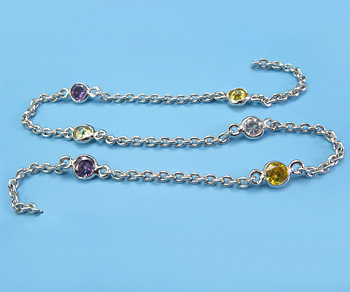
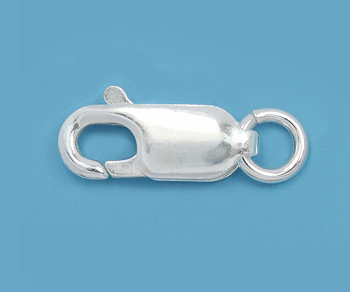
Remember never walk away with the lights still ON. Turn them off immediately after use.
The best thing about this is - you can apply this to shoot photos of ANY object and it will increase your results TREMENDOUSLY!
Also note that if you go out and buy a highly expensive camera that will NOT work for you especially if you do not follow these simple reflection/lighting rules.
In most cases a basic manual mode DSLR like a simple Canon Rebel will work fine for photos with a kit lens. You just need the knowledge, patience and time to stick with it.
Lighting and reflections are everything with jewelry photos, so you can use this as a base next time your at the photo table.
So get going - photograph jewelry. The main thing is to have some fun with it!
Think of it as a papier-mâché project or creating your own little world to capture a miniature object at it's best!


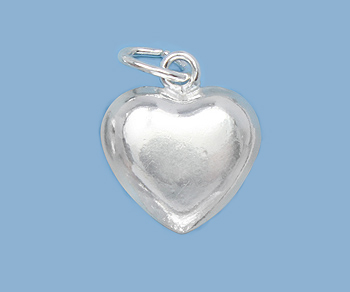
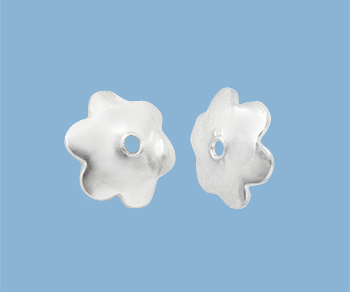 Don't forget CGM Findings can help you getwholesale jewelry supplies at incredibly low prices and we are here to help you with your jewelry business. We do require a Resale license but we are committed to fast shipping, a large selection, and low pricing.
Don't forget CGM Findings can help you getwholesale jewelry supplies at incredibly low prices and we are here to help you with your jewelry business. We do require a Resale license but we are committed to fast shipping, a large selection, and low pricing.
You can call us M - F 8:30AM-5:30PM Pacific Time at :
1 800 426 5246
Or Tweet, Like, tag or Share this Article with Friends using the Buttons below. Thank you.
You Might Like a few of our other Articles:
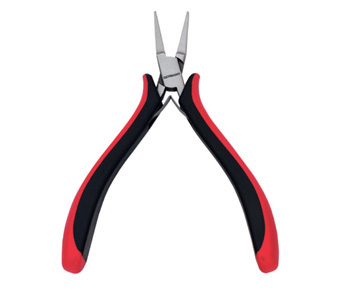
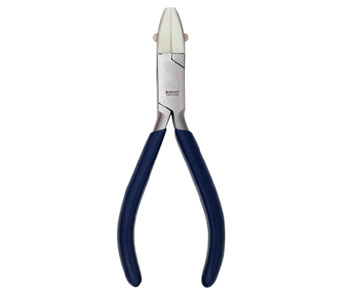






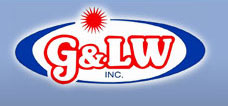









.jpg)